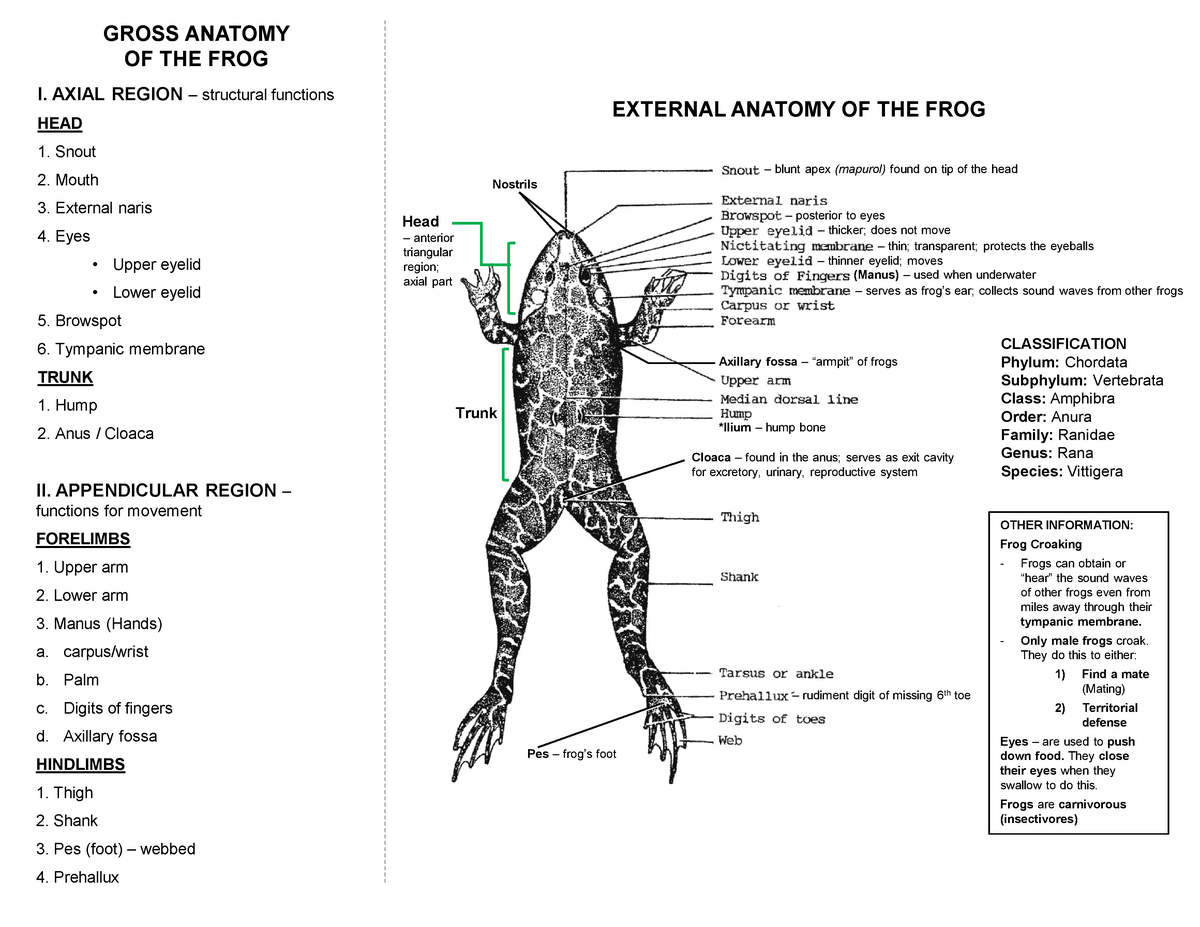

It provides insight into evolutionary adaptations, such as the transition from an aquatic life to life on land. Dissection of preserved frogs is an established introductory activity into vertebrate anatomy and mature body systems. They provide a great model organism for a range of biological studies including, evolution, behaviour, anatomy, and physiology. In animals, the transport of materials within the internal environment for exchange with cells is facilitated by the structure and function of the circulatory system at cell and tissue levels (for example, the structure and function of capillaries) (ACSBL058)įrogs are vertebrates with specialised amphibian characteristics and behaviours.In animals, the exchange of nutrients and wastes between the internal and external environments of the organism is facilitated by the structure and function of the cells and tissues of the digestive system (for example, villi structure and function), and the excretory system (for example, nephron structure and function) (ACSBL057).In animals, the exchange of gases between the internal and external environments of the organism is facilitated by the structure and function of the respiratory system at cell and tissue levels (ACSBL056).

The specialised structure and function of tissues, organs and systems can be related to cell differentiation and cell specialisation (ACSBL055).Multicellular organisms have a hierarchical structural organisation of cells, tissues, organs and systems (ACSBL054).


 0 kommentar(er)
0 kommentar(er)
